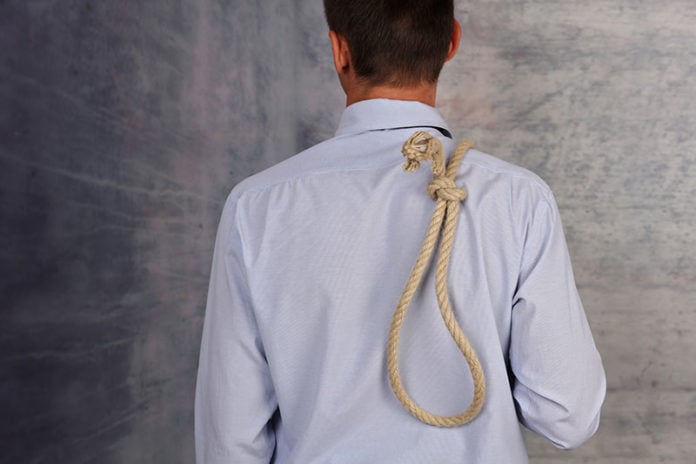On Thursday, officials at the Centers for Disease Control and Prevention reported that suicide rates in the US have risen by 30 percent since 1999.
Only about half the people in the US who committed suicide were known to have a mental health condition. Historically, depression has been considered the main driver of suicide. But now the CDC is less certain.
The researchers who worked on this report wrote that “From 1999 to 2015, suicide rates increased among both sexes, all racial/ethnic groups, and all urbanization levels.”
The CDC report also found that middle-age adults “had the largest number of suicides and a particularly high increase in suicide rates.” The only group for whom suicide rates have not risen are people over the age of 75.
Nearly 45,000 people in America killed themselves in 2016, which was a horrifying historical high. The CDC researchers went through all the numbers of suicide deaths since 1999 and looked at them state by state.
The suicide rate went up by more than 30 percent in at least half of the states in America. In fact, every state, except Nevada, saw at least some rise in suicide rates over the last 20 years. (But Nevada has historically had one of the highest suicide rates in the country anyway.)
The rate of suicide increased the most in certain rural Western/Mid-Western states, like Montana, Idaho, Wyoming, the Dakotas, and Minnesota. Kansas and Oklahoma also saw very high increases.
The CDC’s principal deputy director, Dr. Anne Schuchat, said this: “Those are generally rural states. We know the economic downturn hit rural states hard and the recovery sometimes takes longer in some of those rural communities. We also know in rural states that access to care may be harder.”
And these are fair points. The access to care point is especially pertinent, as mental health services are a challenge in this country. It is often expensive and time consuming to see a therapist, and as a culture we’re not well informed about how to find the right therapist or psychiatrist. Many don’t know whether those kinds of things will be covered under their insurance.
Many may think that you only need to go see a shrink if you’re “really crazy”, and so they avoid going because they don’t want to confirm to themselves that they need help with their mental health.
People may avoid or lack access to mental health care resources for any number of reasons. And that almost certainly is contributing to the issue of suicide rates.
But I don’t buy the “economic downturn” argument, and neither should you.
When details were available on what could have been factors in the suicides studied, the CDC found that 42 percent of those who killed themselves had a “relationship problem,” while only 16 percent had “job or financial problems.” That really gets at the heart of the issue more closely.
So, sure, job or financial problems can lead one into a spiraling mental health issue. (29 percent had “some kind of crisis”, and 28 percent had “substance abuse issues”. Some of these factors are likely overlapping.)
But the real issue, it seems, is distance between people. Emotional and interrelation isolation.
Although I’m not an expert, I would hazard a guess that the alienating effects of modern society are a major contributor to rates of suicide. Increased urbanization drains the population of rural communities, destroys economic opportunity, leaves drugs and crime in places that once had thriving small towns.
Because technology allows us to maintain the illusion that we’re “keeping in touch” with people from communities that we’ve really severed ourselves from, modern day people are more transient than ever.
As their children and friends move on to seek better opportunities, is it any wonder that middle-aged adults in rural areas are struggling with feelings of disconnectedness, loneliness, depression, and worthlessness? Is it any wonder that some are choosing not to continue that struggle?
As a society, we move around. A lot. We move from place to place and from group to group. Instead of forming real, deep-seated friendships and relationships, we now form Facebook friendships that don’t even begin to meet the same emotional needs.
Virtual relationships scratch the itch for approval and indulge our narcissism, but they don’t nourish the human soul. They don’t meet our need for community.
More and more people have moved away from their home communities to seek work in the massive urban sprawls that dominate our cultural landscape. In place of the real relationships they had back home, many try to create virtual relationships with the same people, rather than forming new groups and support networks in the places they move too. Is it any wonder that loneliness and social isolation are the rules of the day?
It’s not just the economy.
It’s the nature of our brave new world.





























